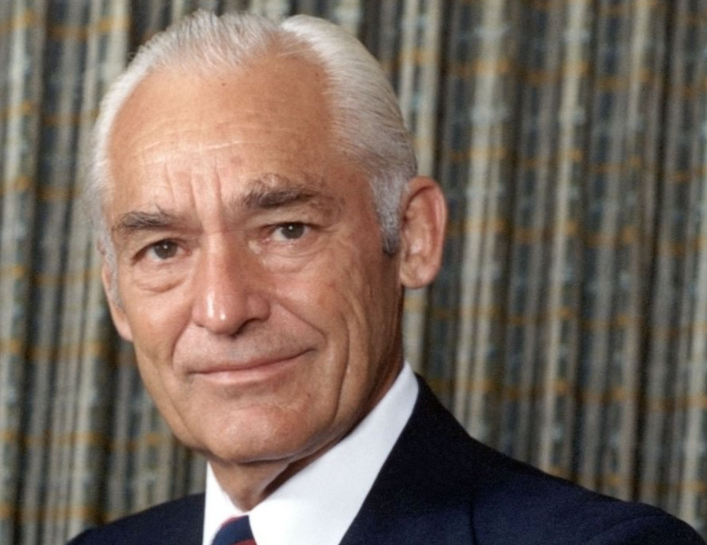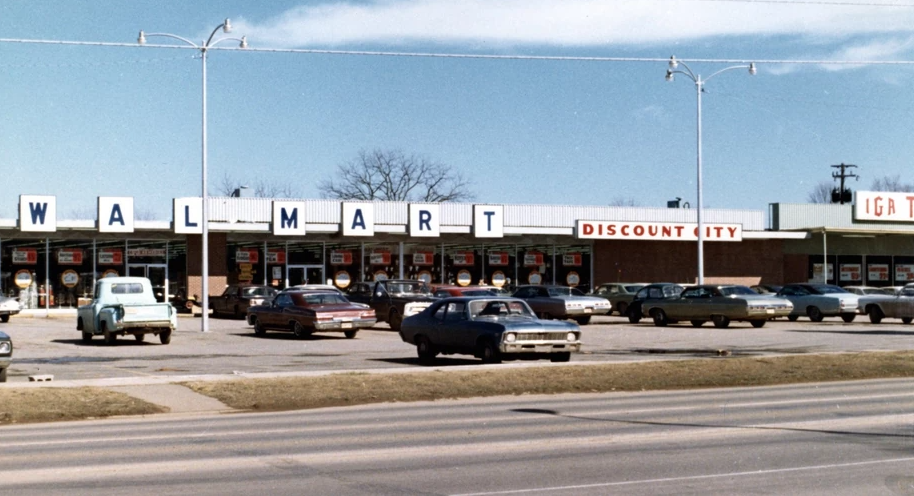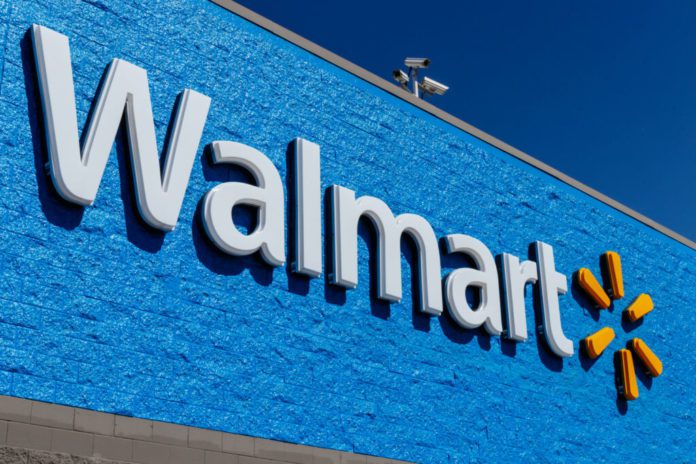Walmart Inc. is an American multinational retail corporation that is publicly traded family-owned business and controlled by the Walton family. The company was, however, founded by Sam Walton almost six decades ago. Sam Walton’s heirs own over 50 percent of Walmart through both their holding company Walton Enterprises and their individual holdings.
Walmart Inc. is an American mega retail corporation with headquarters in Bentonville, Arkansas, United States. The company runs a chain of low-price department stores, supercenters (hypermarkets), and grocery stores, among others.
Walmart is a pioneer in discount department store business designed to bring customers an affordable yet satisfying shopping experience. With about 10,524 stores and clubs across the globe, Walmart prides itself as the largest company, by revenue, in the world as well as the biggest private employer of labor worldwide with more than 2 million workers in its workforce.
Breakdown of The Ownership of Walmart
Walmart, despite being a public company, is owned and controlled by the Walton Family (the founder’s family). Upon the founder’s death in 1992, his ownership of the company was transferred to his wife and children. His first child, Samuel Robson Walton, succeeded him as Chairman of Walmart and held the position until 2015. The Walton family owns 50.85% of Walmart. These shares are held through Walton Enterprises LLC (35%) and Walton Family Holdings Trust (15%). Rob Walton owns 0.09% of the company’s total shares outstanding while Marc E. Lore and C. Douglas McMillon own 0.07% and 0.05% respectively.
Top 10 Owners of Walmart Inc
Stockholder |
Stake |
Shares
|
Total value ($) |
| The Vanguard Group, Inc. | 4.49% | 125,700,191 | 17,918,562,227 |
| BlackRock Fund Advisors | 2.22% | 62,231,369 | 8,871,081,651 |
| SSgA Funds Management, Inc. | 2.21% | 61,820,260 | 8,812,478,063 |
| Geode Capital Management LLC | 0.82% | 22,834,110 | 3,255,002,381 |
| Northern Trust Investments, Inc.(… | 0.55% | 15,298,663 | 2,180,824,411 |
| Norges Bank Investment Management | 0.54% | 15,012,238 | 2,139,994,527 |
| State Farm Investment Management … | 0.53% | 14,698,850 | 2,095,321,068 |
| Fisher Asset Management LLC | 0.45% | 12,626,107 | 1,799,851,553 |
| Morgan Stanley Smith Barney LLC (… | 0.39% | 11,013,546 | 1,569,980,982 |
| The California Public Employees R… | 0.38% | 10,577,430 | 1,507,812,647 |
Top 10 Mutual Funds Holding Walmart Inc
Mutual fund |
Stake |
Shares
|
Total value ($) |
| Vanguard Total Stock Market Index… | 1.42% | 39,729,664 | 5,663,463,603 |
| Vanguard 500 Index Fund | 1.01% | 28,378,386 | 4,045,338,924 |
| Vanguard Dividend Appreciation In… | 0.62% | 17,221,675 | 2,454,949,771 |
| Government Pension Fund – Global … | 0.52% | 14,611,781 | 2,082,909,382 |
| SPDR S&P 500 ETF Trust | 0.50% | 14,100,815 | 2,010,071,178 |
| Fidelity 500 Index Fund | 0.46% | 12,945,146 | 1,845,330,562 |
| Vanguard Institutional Index Fund | 0.40% | 11,271,801 | 1,606,795,233 |
| iShares Core S&P 500 ETF | 0.39% | 10,861,910 | 1,548,365,271 |
| Vanguard Value Index Fund | 0.38% | 10,603,694 | 1,511,556,580 |
| SPDR Series – Consumer Staples Se… | 0.30% | 8,341,396 | 1,189,066,000 |
Walmart Was Established In 1962
The retail giant was founded by American businessman and entrepreneur Samuel Moore Walton (1918-1992) in 1962. The business, at this time, was financed and run by the Walton family. However, as the company expanded its frontiers, the business grew beyond the financial capacity of the family. Thus, there was a need to solicit for external funding to meet the founder’s aspiration of becoming a global giant in retail business modeled on low prices and high customer satisfaction.
The Genesis of Walmart
Sam Walton was not an entrepreneur from the get-go, which is usually the same with most entrepreneurs out there. Prior to establishing Walmart, he joined the military and served in World War II from 1943 to 1945 under the Army Intelligence Corps. When his service in the military eventually ended in 1945, he relocated to Newport, Arkansas, with his wife, and there, he began working in retail. He later took over the management of a variety store at the age of 26.

Walton’s involvement in the retail business fed his interest in retailing and consequently, he secured a $20,000 loan from his father-in-law and added his $5,000 savings from his time in the Army to buy a branch of the Ben Franklin variety store in Newport, Arkansas, which was a franchise of the Butler Brothers chain. He sold products at prices lower than what his competitors were offering. Although his profit margin was small, Sam saw his business as a form of campaign for consumers to be able to achieve satisfaction without going bankrupt. His focus was primarily to generate higher-volume sales, not high-profit margins.
Sam Walton sought suppliers willing to sell at a lower cost than those used by other stores and was as such able to undercut his competitors on pricing. The store experienced significant progression in sales, with revenue of US$105,000 in the first year of operation to $140,000 in the second year, and $175,000 in the 3rd year. By its 5th year, Walmart was generating a revenue of not less than $250,000.
Owing to the fact that the price at which he leased the store location was very high, Sam Walton was unable to renew the lease agreement after it expired in the 5th year (in 1950). As a result, he sold the business to the owner of the building and relocated the business to a new store at 105N, Main Street in Bentonville, and named it “Walton’s Five and Dime” (that store has now been converted to Walmart Museum).
Because his business model had proven to be a huge success, Sam began to see the need to open a much larger store.
Opening The First Walmart Store

Mr. Walton opened the first Walmart store on July 2, 1962, at 719 W, Walnut Street, Rogers, Arkansas. The store was named Wal-Mart Discount City. Within five years of its opening, the business achieved remarkable success and Sam was able to open 18 other stores in Arkansas and recorded $9 million in sales. The business at this stage was run by Sam, his wife Helen, and his brother Bud, with support from his father-in-law.
Sam also encouraged his store managers to have stakes in the stores. In 1968, the first Walmart stores outside Arkansas were opened. The stores were located at Sikeston, Missouri, and Claremore, Oklahoma. On 31 October 1969, the company was incorporated as Wal-Mart, Inc. and in 1970, its name was changed to Wal-Mart Stores, Inc. Also in 1970, the company opened a home office as well as its first distribution center in Bentonville, Arkansas.
- Walmart was founded in 1962 by Sam Walton in Rogers, Arkansas.
- 50.85% of Walmart is owned by the Walton family through both their holding company, Walton Enterprises, and their individual holdings.
- On the 1st of October 1970, Wal-Mart, Inc. started trading stock as a public company with an initial public offering (IPO) of $16.50 per share.
- Walmart went international in 1991 with the opening of its store in Mexico City.
- With about 10,524 stores and clubs across the globe, Walmart prides itself as the world’s largest company by revenue with US$548.743 billion.
- The multinational retail corporation is also the biggest private employer of labor worldwide with more than 2 million workers in its workforce.
Walmart’s Initial Public Offer, Growth, and Achievements
On the 1st of October 1970, Wal-Mart, Inc. started trading stock as a public company with an initial public offering (IPO) of $16.50 per share. In no time, the company was listed on the New York Stock Exchange, and six months after its IPO (in May 1971), Walmart company’s first stock divide took place at a price of $47 for each share. At this time, the company was already doing business in five states, including Oklahoma, Arkansas, Louisiana, Kansas, and Missouri.
In 1973, it began operating in Tennessee and Kentucky, by the next year, it entered Mississippi, followed by Texas in 1975. At this point, Walmart could boast of 125 stores, 7,500 employees, and a total sales of $340.3 million. Walmart continued to enjoy a tremendous increase in sales and by the company’s 25th anniversary in 1987, it had 1,198 stores with sales of an estimated $15.9 billion and 200,000 connections. By the end of 1995, Walmart stores had opened throughout the rest of the states in the U.S.
The multi-national company completed its satellite network in 1987. This $24 million project linked all Walmart stores with two-way voice and data transmissions and one-way video communications with the Bentonville office, making it the largest private satellite network at the time. Walmart Supercenter opened in Washington, Missouri in 1988. In February of the same year, Sam Walton stepped down as CEO, relinquishing the role to David Glass. Sam, however, retained his position as Chairman of the Corporate Board of Directors.
The company eventually rose to become the third-largest retailer in the United States in the late 1980s and the most successful in terms of sales revenue by 1990. Unfortunately, Sam Walton died just three months before the company’s thirtieth anniversary on the 5th of April 1992 as a result of multiple myeloma. But thankfully, Walmart has never stopped growing.
The multinational retail corporation became the most powerful retailer in the United States by the mid-1990s. The company expanded beyond the United States, venturing into Mexico in 1991 and Canada in 1994 with the purchase of 122 Woolco stores. The company further expanded beyond North America as it veered into South America in 1995, opening stores in Argentina and Brazil.
In 1996, Walmart opened its first stores in China and in 1997 celebrated its first $100 billion sales. Having maintained a steady rise in sales revenue and significant expansions, Walmart was also added to the Dow Jones Industrial Average in 1997, knocking off Woolworth. With the acquisition of Asda in the United Kingdom for a whopping US$10 billion, the company entered Europe in July 1999.
H. Lee Scott became Walmart’s president and CEO in 2000 and in the same year, the company’s sales increased to $165 billion. Walmart was on the Fortune 500 list for the first time as America’s largest corporation, with estimated revenues of $219.8 billion and profits of $6.7 billion in 2002. The company remained on the list every year except for 2006, 2009, and 2012.
By the end of 2005, Walmart reported an estimated US$312.4 billion in sales, with over 6,200 facilities across the globe plus 3,800 stores in the United States and 2,800 around the world. While Walmart’s growth made the company the largest corporation in the world, it also earned criticism from other quarters as people worried about the “Walmart Effect” on local communities and small businesses within the location of Walmart stores.
Walmart’s Major Acquisitions/Mergers
Walmart has acquired over 20 companies in the course of its existence as a company. Although the company seldom discloses the cost of these acquisitions, its costliest and largest acquisition is said to be Flipkart Internet Pvt, which it acquired for $16 billion in 2018.
Long before then, Walmart made its first corporate acquisition in 1977 when it expanded into Illinois and assumed ownership of the Mohr-Value stores, in Missouri and Illinois. The following year, it acquired the Hutcheson Shoe Company, and in 1981, it acquired 92 Kuhn’s Big K stores after expanding into the southeastern United States market. In 1990, Walmart took over a foodservice distributor known as The McLane Company. However, it was eventually sold in 2003 to Berkshire Hathaway.
The billion-dollar company made its way into the Japanese market in 2002 by becoming a minor stakeholder in Seiyu Group, which later became a wholly-owned subsidiary of Walmart six years later. The multinational company also acquired Distribucion y Servicio (D&S) around the beginning of 2009 and thus, made its way into Chile. In May of the same year, it also gained access into the Indian market following an equal partnership with Bharti Enterprises.
Walmart confirmed that it was buying Vudu, Inc., a video streaming company, on the 22nd of February 2010, for about $100 million. In June of the next year, the company also gained access into 13 African countries following its acquisition of 51% of Massmart Holdings.
Other Walmart acquisitions/mergers include PACE Membership Warehouse, Woolco Canada, Asda UK, Wertkauf hypermarkets (Germany), Interspar hypermarkets (Germany), McLane Company, Bompreco (Brazil), Moosejaw (Michigan), Jet.com, Walmart de México y Centroamérica (Mexico), ModCloth, Bare Necessities, Lider (Chile), Parcel, and Art.com among others.
Net Worth of Walmart’s Owners: The Walton Family

The Walton Family made it to the number one spot on the Forbes list of America’s Richest Families published on December 17, 2020, with an estimated net worth of $247 billion. In addition to being the wealthiest family in America, they are also the richest family in the world. The year before, the family had a combined net worth of $191 billion and in 2018 it was $151.5 billion. Most of this fortune was acquired through their ownership and management of Walmart Inc., which is said to be worth more than $328 billion.
Sam Walton’s children, Samuel Robson ‘Rob’ Walton (his eldest son and former chairman of Walmart), James ‘Jim’ Walton (Rob’s younger brother), and Alice Walton, the founder’s only daughter, have all been in the top twenty of the Forbes 400 list since 2001. Their late sibling, John Walton, and mother Helen Walton, were equally consistently on the list until their deaths in 2005 and 2007 respectively. However, Alice’s net worth tops the board.
This collective fortune is broken down thus:
- Alice Walton – $70.4 billion
- Jim Walton – $70.1 billion
- Samuel Robson Walton – $69.8 billion
- Lukas Walton – $17.7 billion
- Ann Walton Kroenke – $9.4 billion
- Nancy Walton Laurie – $8.5 billion
- Christy Walton – $8.1 billion
Over the 2020 holiday period, Walmart reported strong sales due to a 69% increase in U.S. e-commerce sales. However, its earnings for the period were below the expectations of the financial markets of the United States, which also informed investors in advance that ahead lied slower sales growth and higher spending. True to the warning, Walmart shares went down by 6% on February 18, 2021, quickly knocking over a whopping $25 billion from its market capitalization and dragging down the Dow. As a result, the fortune of the descendants of Walmart founder shrunk by almost $13 billion.

